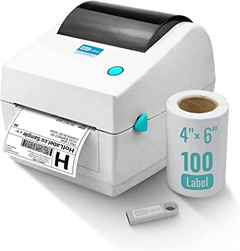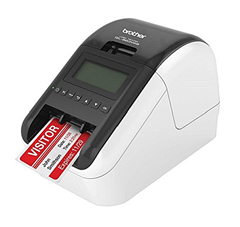Barcode labels play a crucial role in the food industry, ensuring quality, safety, and traceability throughout the supply chain. Properly designed and applied barcode labels help streamline operations, minimize errors, and comply with regulatory requirements. Here’s how barcode labels contribute to maintaining quality in the food industry:
- Accurate Inventory Management: Barcode labels enable accurate tracking of raw materials, ingredients, and finished products throughout the production process and supply chain. This improves inventory accuracy, reduces waste, and prevents overstock or stockouts.
- Traceability and Recall Management: Barcodes allow for rapid tracing of products back to their source in case of recalls or quality issues. This minimizes the scope of recalls and ensures affected products are quickly removed from the market.
- Supply Chain Transparency: Barcode labels can include information about the product’s origin, production date, expiration date, and other relevant details. This transparency enhances consumer trust and helps prevent counterfeit or adulterated products from entering the market.
- Efficient Data Entry: Barcode scanning eliminates manual data entry errors, ensuring that accurate information is captured and recorded in various systems, including inventory management, production, and shipping.
- Regulatory Compliance: Many countries have regulations that require accurate tracking and labeling of food products. Barcode labels provide a standardized way to meet these requirements and avoid legal and financial penalties.
- Reduced Human Errors: Barcode scanning reduces the likelihood of human errors in tasks such as order picking, shipping, and inventory management. This leads to higher overall quality and efficiency in operations.
- Improved Shelf Life Management: Barcodes can include expiration dates, enabling proper rotation of inventory to minimize waste and ensure customers receive fresh products.
- Data Collection and Analysis: Barcode scanning generates data that can be used for performance analysis, supply chain optimization, and quality improvement initiatives.
- Efficient Product Identification: In a fast-paced environment, barcode labels help staff quickly identify products, reducing handling time and improving efficiency.
- Supply Chain Efficiency: Barcode labels facilitate efficient supply chain processes, leading to shorter lead times, reduced stock holding costs, and improved on-time delivery performance.
To ensure the quality and effectiveness of barcode labels in the food industry, consider the following best practices:
- Label Design: Create barcode labels with clear, high-contrast designs that are easily scannable. Choose label materials that withstand the food industry’s conditions, such as temperature variations, moisture, and handling.
- Barcode Type: Select the appropriate barcode symbology for your needs. Common options include UPC-A, EAN-13, Code 128, and Data Matrix.
- Label Placement: Ensure labels are placed in a consistent location on the packaging for easy scanning. Labels should be easily accessible and visible to scanners.
- Regular Maintenance: Regularly inspect barcode labels for wear, fading, or damage. Replace labels that are no longer scannable to avoid disruptions in tracking and data capture.
- Quality Scanners: Invest in high-quality barcode scanners that can accurately read labels, even in challenging environments.
By implementing effective barcode labeling practices, the food industry can enhance efficiency, maintain product quality, comply with regulations, and provide consumers with safe and traceable food products.

